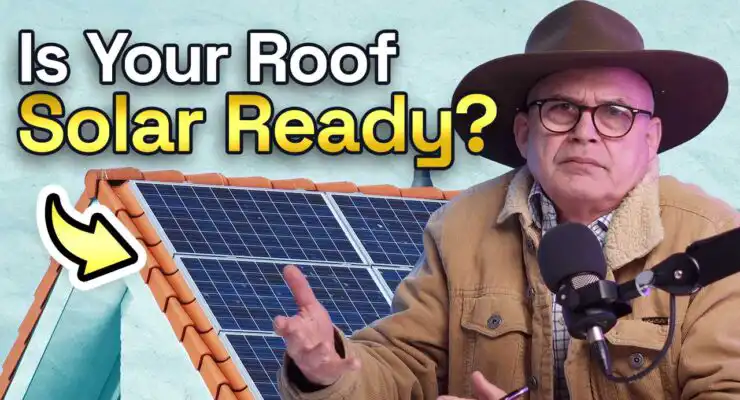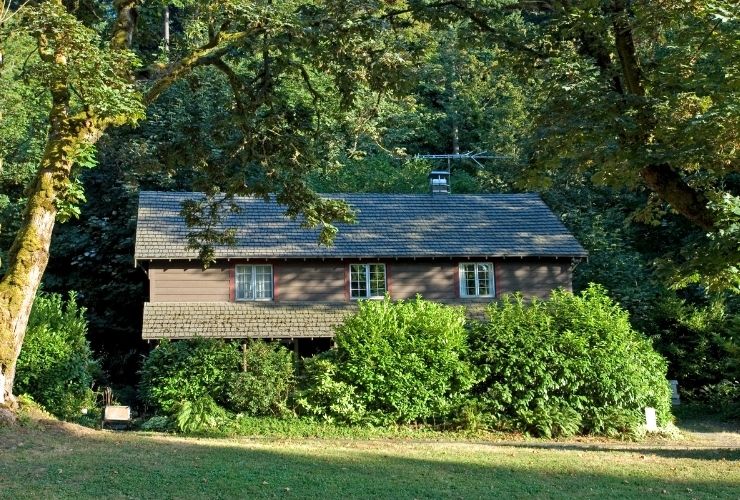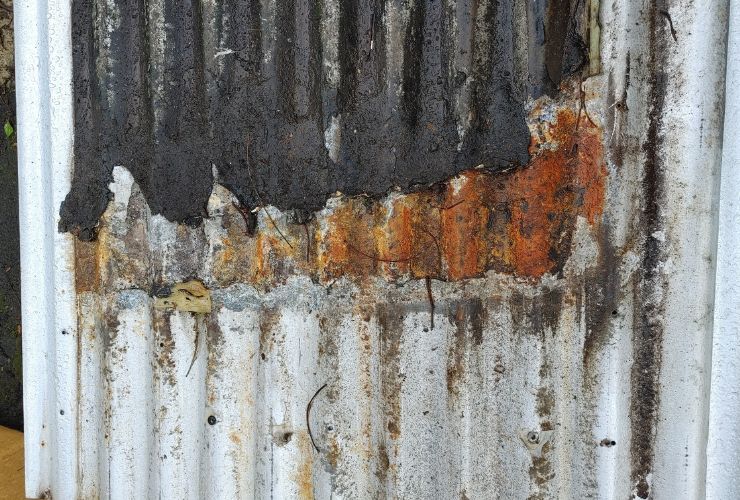
Fast read
Most roofs in Australia can accommodate solar panels, but factors such as roof strength, shading, roof surface, orientation, and slope can affect solar panel performance. Roofs that can bear the weight of someone walking on them should be able to hold solar panels. Shading of the roof can decrease the solar panel's output, while an eastern or western-facing roof may provide more productive electricity generation.
The roof's pitch should be equivalent to the latitude of the home for the best generation year-round. Flat roofs are easy to work on but must be installed carefully to prevent the overshadowing of panels by other rows, which can reduce output and put shadow stress on the panel bypass diodes. Overall, most roofs should be able to hold solar panels and provide benefits to the home or business.
How do I know if my roof is good for solar?
Australian roofs can have solar panels, but their effectiveness depends on roof strength, shade, angle, direction, and slope. So how do I know if my roof is good for solar power? Roofs that can bear the weight of someone walking on them should be able to hold solar panels. Roof shading reduces solar panel output, but east or west-facing roofs generate more electricity.
The roof’s pitch should be equivalent to the latitude of the home for the best generation year-round. Working on flat roofs is straightforward, but it’s essential to install them carefully to prevent the overshadowing of panels by other rows. This oversight can reduce output and place shadow stress on the panel bypass diodes. Overall, most roofs should be able to hold solar panels and provide benefits to the home or business.
What are the best roof conditions for installing solar?
Most roofs in Australia can support solar panels, offering advantages for your home or business. However, the number of solar panels and the potential savings may vary. We’ll now explore various factors that can affect your roof’s suitability and the solar results it can deliver.
Strength of the Roof
Most roofs in Australia should be able to bear the weight of solar panels. If your roof can hold a person, it can hold solar panels and their mounts.
Homes with standard pitched or skillion-style roofs using wooden trusses or rafters can easily install a solar PV system without any issues.
Shading
The ideal situation for the best solar generation is no shading of your roof at any time of the year, whether from trees, other buildings, power poles, TV aerials, etc. If your home’s roof is heavily shaded, installing panels and getting a decent generation result may be difficult. A local supplier site inspection will give you clarity on this matter.
If your roof doesn’t have much shade, you can install PV panels in a way that deals with the shading issue. In shaded areas on the roof, installers can use MLPE such as microinverters and optimisers. This helps to decrease the effect of shading and minimises power loss.
Roof Surface
Most roof surfaces should be able to take solar panels as well. Working with concrete tiles is relatively easy, while terracotta and slate tiles, among others, require a bit more care. Nevertheless, the installation process can typically manage this well in most cases.
During installation, it is important to have spare tiles available. This is because tiles with small cracks can be damaged. The installer can then replace any damaged tiles with the spare ones.
Tin/Colorbond steel roof is probably the easiest to work on, but a quality company will make sure the sheets are not damaged and scratched as part of the work.
Asbestos roofs must be replaced before solar installation as these cannot be worked on.

Roof Orientation
More power will be produced on a typical day and yearly on a northern-facing roof in Australia and New Zealand. While north-facing roofs may produce the most power, they may not give the home the best overall result.
However, in some cases, panels placed on an easterly or, more so, westerly roof can be advantageous for generating electricity. This is because the more direct the sun is over the solar panels, the more light hits the panel and the more power is generated.
So, for a northern-facing roof, the solar panels perform best in the middle of the day (When there may be no one at home and electricity usage is low). For a western-facing roof, the panels will be more productive mid to late afternoon, often when people use the most power, coming home from work or school, cooking, running air conditioning, the TV, gaming etc.
Similarly, panels on an eastern roof will produce more power in the morning when people are getting up and making breakfast, preparing for work etc. In many cases, western and easterly solar panels are as advantageous as northerly facing panels.
Roof slope
The slope or pitch of the solar panels also influences their performance. For the best generation year-round, the angle of the roof should be equivalent to the latitude of the home.
In Brisbane, for example, an ideal roof would be 27 degrees, while in Sydney, 33 degrees would be excellent; Hobart’s perfect mark is 42 degrees; however, matching this angle is not critical, and for standard pitched roofs, it is best to mount the panels flush to the roof whether it is 15 degree or even a very steep 45-degree roof. Overall this change will only make a 3-5% difference in electricity generation.
Types of roofs that are good for solar
Flat roofs
The positive aspect is that such roofs are straightforward to work on—installers like them from a safety point of view. Installers can get access quickly, store material safely, and have no issue moving about. The overall installation safety requirements, for example, regarding edge protection rails, are usually slightly less, especially if they are only one story.
Suppose one would put the same system size, same panels, and same inverter solution on a flat roof versus on tilt frames. The PV system output overall would be a little more on the tilt frames. However, summer energy production would be superior with the flat panels. This is because the sun is right overhead, and the lower irradiation winter production is better on the angled panels, as the sun will hit them more directly.
You will find that the peaks between summer production and winter production will be more set apart in a flat on-roof panel system than if you install a tilt frame system. This is because this installation method meant that there was a danger if the panels were angled too high. As well as if the spacing between rows was narrow.
What does this mean?
It means that the front row panels would overshadow the one behind, and the 2nd row would overshadow the 3rd. At certain times of the day, especially in winter. These shadows on the panels would then reduce output and put shadow stress on the panel bypass diodes. So all the effort to get more work, if done poorly, would come to nothing.
Batteries and EV charging are around the corner, and the need for larger photovoltaic systems has dominated this installation method. For example, a flat roof that would be initially big enough for a 6.6 kW system in a tilt frame installs could today be big enough to install 10 kW of panels if installed flat.
One negative aspect of the flat install is that when it hasn’t rained for quite a long time, you will get dust and debris built up on the flat panels. We recommend an annual panel clean in such a scenario.

Angled roofs
In Australia and New Zealand, most residential homes have a 15 to 25-degree pitch. Only a few have steep pitches.
So when I say steep roofs, we are talking about roofs with 30, or 35-degree angles. They are much more common in Europe, and they have this steep angle over there so that the snow can slide off the roof and does not put too much weight on it.
So the standard Australian 25-degree is ideal for good energy production for most of the country. Maybe 5 degrees steeper will give you 3% more power output in Melbourne, but it’s just not worth the time and effort not to go with the existing roof angle. Going with the current roof line will also visually make the solar system as appealing as possible.
As a general rule, Darwin will be best with a relatively flat roof of 12 to 15 degrees, and Hobart will give a slightly better output if the roof is steeper in the 30 to 35-degree range. But every angle will work – so please do not worry about it too much.
What is the best direction to install solar on my roof?
Pointing the panel North in Australia and New Zealand will give you the highest annual yield. But one does not only want to get a lot of electricity from your solar system. One seeks to also match one’s energy consumption pattern with the panel direction of the roof.
If you undertake a lot of electric cooking and baking first thing in the morning, you want to face some panels East because you want those panels to support your early morning electricity consumption.
If, on the other hand, you come home at two or three o’clock and turn on the air conditioner to heat or cool the home, you want the panels to face Northwest or West.
So while nobody’s installing solar panels on the South roof because the sun never shines right overhead, I predict that when we need the whole roof space for electric car charging, we will also put panels on the South. Solar panels installed in the South will still generate about 65% of the electricity of a northern-facing roof install, so it’s not a total waste.
Difficult roofs
The roofs that are tricky for solar are the ones that have a lot of gables and small sub-roofs or plenty of shade. Some architects, even just a few years ago when solar was already on the horizon, designed roofs with many ridges and valleys, avoiding large, clear roof spaces.
Another interpretation of a difficult roof – is a roof with a lot of shade. Shaded roofs require the solar salesperson or the installer to undertake a shadow analysis. There is special shade analysis equipment available, such as sun eye.
If your roof is large enough, try to avoid the area which will have shade. Still, if you do not have that option, you might have to consider micro-inverters or optimisers as the inverter solution, as they will give you a better system output when there are shade issues.
Another difficult roof is covered with slate or asbestos. Asbestos roofs are best avoided; one would recommend replacing the roof sheeting before installing solar. Slate roofs can handle solar, but one will require a very experienced solar installer and special racking equipment to install a solar system well. Expect to pay a small premium for slate roof installations.
Condition of a good roof for solar
This could be an issue if the roof has tiles that have been there for 40 or 50 years. When an installer with 80 or 90 kilograms carrying a 22 kg solar panel steps on such a brittle tile, a crack is often inevitable. The installers will then have to place timber sheets on the roof to spread the weight – a time-consuming and labour-intensive job.
Having spare tiles available before the solar installation company arrives is necessary when one has an older tile roof. This way, you can replace any cracked tiles on the same day, minimising the risk of water damage to the ceiling beneath the solar system.
Rusty metal roofs can also present a challenge. There’s no point putting a 20-year-lasting solar system on your roof with only a five or 10-year lifespan left. The quality of the roof, which is the foundation of the solar system, has to be sufficient to last as long as the solar system lasts. Otherwise, one needs to undertake roof repairs before installing the solar.

Sadly, the low-cost solar companies won’t inform you about this and will install the solar system on a damaged roof. Any subsequent issues will be the homeowners’ problem, so do not recommend such companies.


